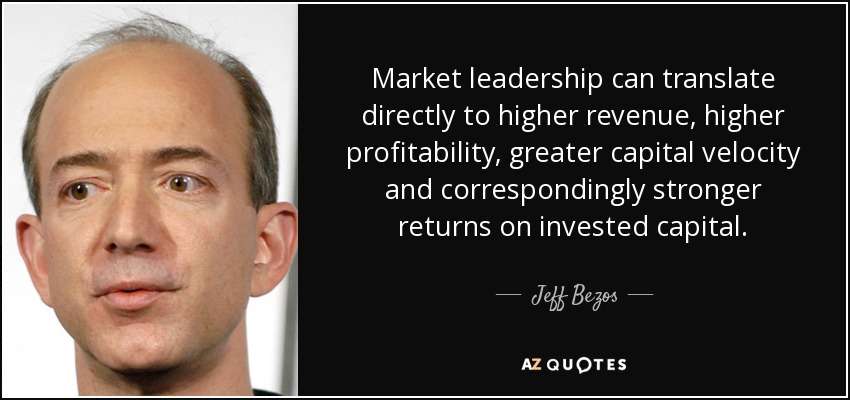High ROIC – Key To Survival: Ensures Investors’ Protection And Long-Term Value Creation

The gradual shift in focus to ROIC (Return on Invested Capital) by CEOs and corporations creates more opportunities for stockholders / investors.
In 2016, the Wall Street Journal dubbed ROIC as “The Hottest Metric in Finance”.
Get our Guide 7 Tips to Picking Great Stocks and 3 Times You Must Sell for free to make better investment decisions today.
In his 2018 letter to shareholders, J.P. Morgan Chase (JPM) CEO, Jamie Dimon pointed out ROIC “as a key driver of value.”
Studies on ROIC in 2016 also found that the percentage of companies that tied executive pay to capital allocation measures like ROIC rose from 21% to 30%.
In recent years, ROIC has become a common word in corporate America.
CEOs are beginning to care about ROIC because Institutional Investors care.
And they should, because a higher ROIC means higher value creation within a company.
And higher value creation within a company means higher share prices and bonuses in time.
I am convinced that companies that are ignoring this key driver of long-term value creation will be punished by shareholders and the market in time.
Why?
Because over time, companies that ignore ROIC – and keeping it high and raising it over time – will continue to destroy the value within the company and shareholder capital.
Companies that focus on ROIC can survive well during any business environment – including a recession – because they’re always focused on creating value within the company.
Tired of wasting time learning how to find, evaluate, and value stocks all by yourself? If you're ready to learn more today check out our Value Investing Masterclass by clicking here.
Case in point, GE lost over $160 billion – or roughly half its market value – by making poor capital allocation decisions and not focusing on ROIC.
In 2016 alone, then GE CEO Jeffrey Immelt spent $22 billion on stock buybacks while the company was overvalued.
I know these buybacks destroyed value within the company because GEs ROIC dropped from 4% in 2016 to -12.5% in the TTM period.
The reason GE managers approved these measures is because they don’t know anything about proper capital allocation…
And, because the buybacks allowed them to earn their bonuses in 2016…
On the other hand, GM – while facing serious issues in their business – focused on making ROIC a priority over “accounting earnings.”
Accounting earnings are not real-world earnings or returns – they simply show up on the income statement.
Any time you see net income or EBITDA or adjusted EBITDA in a financial report, think accounting – i.e. not real-world capital.
This is why I focus on Operating Income, or EBIT, Free Cash Flow, and Owner’s Earnings.
These are “true”, real-world economics the company produces from its operations and assets.
Not only are these better metrics to value and evaluate a business from but they’re also harder to manipulate than net income as well.
By focusing on ROIC, GM sold off underperforming segments and used that capital to invest in higher return assets so it could invest in its future.
This decision to focus on the growth of ROIC instead of growth in accounting earnings turned the company around.
Since 2017, GM’s ROIC rose from 3% to 6% now – a full 9 percentage point increase.
GM is now thriving and creating value, while GE recently replaced its CEO and half its board after it lost $160 billion in market cap by destroying value.
GM is focused on proper capital allocation, while GE is focused on generating bonuses for executives.
CONCLUSION
Stockholders Can Profit from ROIC
I HIGHLY RECOMMEND THIS DECISION TO FOCUS ON ROIC
Companies having an ROIC over 10% for a sustained period is one of the main hurdles I look for a potential investment to break.
Why?
Because I estimate that over the long term – think 5 to 10 years – I estimate that far fewer than 5% of companies in the world can reach this high threshold.
If they can, this is one sign it may be one of the best run companies in the world, and I may consider investing in them.
If they can do this, they’re focused on the long-term health of the company, focused on proper capital allocation, and focused on growing the internal value of the company well over time.
Almost all companies say they focus on these things, very few follow through with their actions.
Companies that focus on growing ROIC can be a massive competitive advantage for investors, as well as CEOs.
Companies and CEOs that focus on ROIC and proper capital allocation – and at the same time execute their strategies well – are shown in studies to have an output more than 20X returns on investments over time.
Meaning in time, this is a 20X increase in the value of the company – great for both the CEO and shareholders.
ROIC is one of the main metrics I focus on when evaluating a public or private company investment…
It’s so important that I also recommend and implement focus on this metric to every company we advise on capital allocation.
For more information on ROIC, click here…
And for more information on how we can help you and your business with proper capital allocation – including implementing a real-world focus on ROIC – go here.
What are your thoughts on capital allocation and ROIC? I would love to hear them in the comments below.
P.S. Click below to get free access to our recent Owner’s Earnings Training webinar to learn how to calculate and use this important number today.
P.P.S. Go here to get our brand new free guide titled – 7 Tips To Picking Great Stocks and 3 Times You Must Sell for free. In this guide, you’ll learn these things and more of my processes you can learn to begin evaluating companies better and faster NOW.